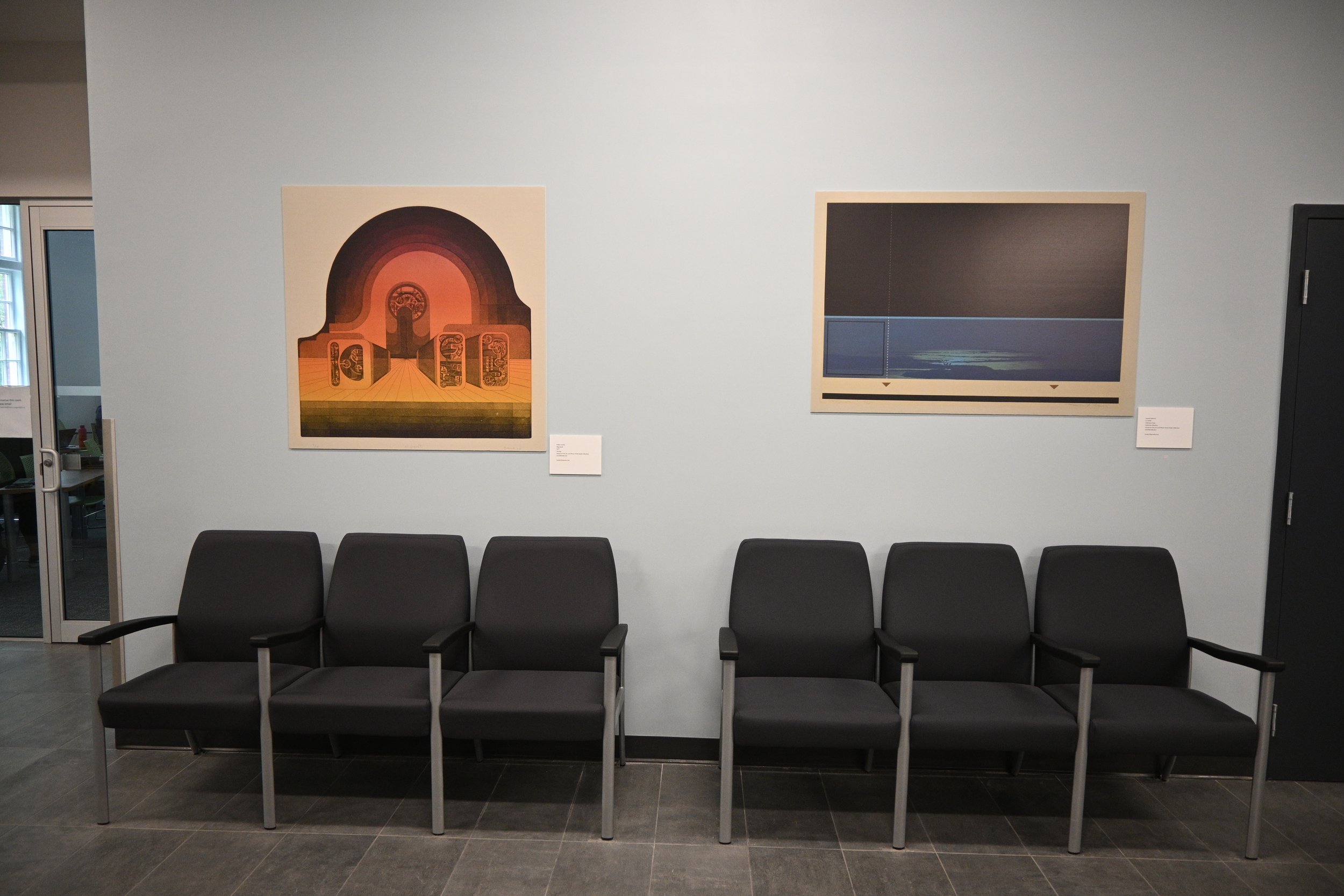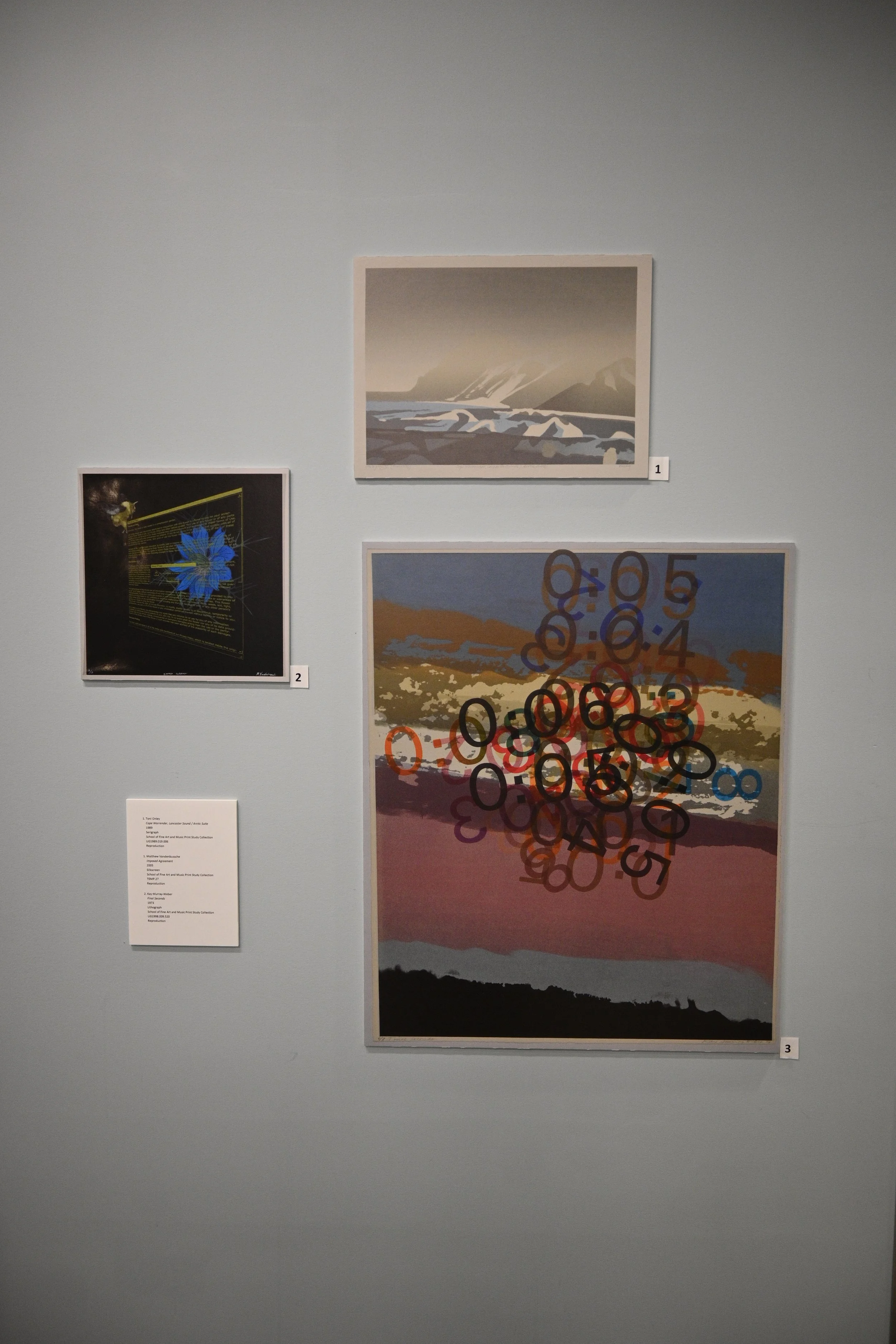“Manufactured Ecosystems” Art Exhibition
The newly launched exhibition, “Manufactured Ecosystems,” created by University of Guelph Art History student Alyssa Ponte, presents a sophisticated exploration of the overlap between nature and technology, art and science. Located in the foyer of the Reynolds building, this exhibition revitalizes the space by integrating the themes of the Manufactured Ecosystems project with the rich holdings of the SOFAM Print Study Collection.
This carefully curated display aims to provoke thought on the future of ecosystems through a lens that merges works of art with techno-inspired visions. To gain a deeper insight into the exhibition and the effort behind it, we interviewed Alyssa.
Q: Why did you create the exhibition?
A: I was approached by [my Undergraduate Research Assistantship supervisor] Dr. Christina Smylitopoulos [Associate Professor in the School of Fine Art and Music] about updating the previous show in the Reynolds building on campus. As I have been working closely with both the School of Fine Arts and Music Print Study Collection and the Manufactured Ecosystems project, the combination of the two seemed like the perfect opportunity to showcase both the works in the collection and the themes of Manufactured Ecosystems while also updating the foyer of the Computer Science building.
Furthermore, in today’s interdisciplinary world, the fusion of art and technology is creating exciting new opportunities. As an example, for computer science students, exploring art exhibitions can be a fascinating way to see processes and systems from a different perspective. By focusing on the underlying processes of artistic creations, students can uncover new ways to appreciate and engage with art. By delving into these processes, students can gain a deeper understanding of artistic techniques, which can, in turn, spark creative ideas for their own work. This exploration of art through its processes not only provides a fresh gateway into the art world but also enhances one’s ability to think critically and innovatively.
Q: What is the goal of the exhibition?
A: The goal of the exhibit is to showcase the intersections between nature and machine, art and science. I hope the works chosen will inspire viewers to take a trans-disciplinary look at speculative fiction and techno-inspired options for the future of our ecosystems. The exhibit is also a great introduction to the Manufactured Ecosystems project and to some fantastic works that are available in the SOFAM Print Study Collection.
Q: Which piece is your favourite and why?
A: I have a few favourite pieces in the show, but by far my favourite is Stephen Patterson’s “Harbor Impression #2”. I enjoy the almost indistinguishable nature of the subject matter, the iridescence of the reflections, and the shapes created by the ripples in the water. The work reminds me of molten metal and the physicality of internal computer hardware.
In discussion on the process of selecting pieces to display that fit the theme of Manufactured Ecosystems, Alyssa informed us that they originally went through over 2000 art pieces, which they then narrowed down to 30. At that stage, they frequently revisited the pieces to decide which came together aesthetically and thematically, noting influential factors in the decision process such as technique variation, mood, and temporal context. There was also an emphasis on colour and sizing, with the two larger pieces being scaled up as they embody the theme of the entire collection.
Q: What do you hope happens in the future with the exhibition?
A: I truly hope that the exhibit continues to change with the aesthetic needs of the building and updates to respond to the issues that it addresses. It is always nice to think that your work will be around forever, but for the sake of staying relevant, it needs to continue to evolve.
For future exploration, all of the works showcased in the Manufactured Ecosystems exhibit are part of the SOFAM Print Study Collection, a great collection of over 2,000 prints spanning the 16th century to the present day, located on the second floor of Zavitz Hall at the University of Guelph. A major part of this exhibit was to introduce students to the collection, urge them to come in, and utilize the prints as research and learning tools.
Swipe to see art pieces followed by Creators



